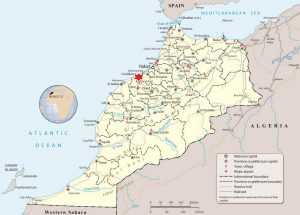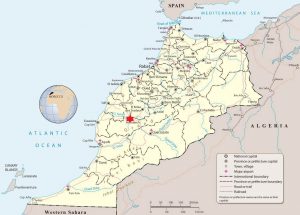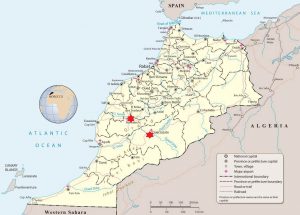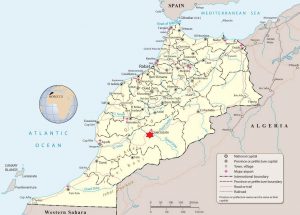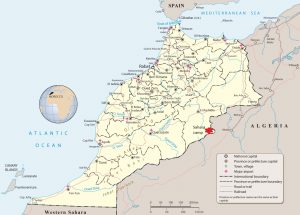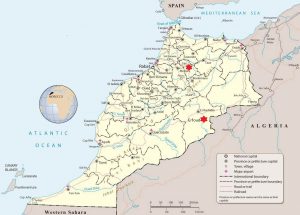Casablanca
Thursday, September 26th, 2019Our drive to Casablanca was along the coast part of the way. Beautiful.
- coast
- kami berdua
- dry, rocky fields
- stone fences
- sunset from our hotel room
We had one full day in Casablanca. Casablanca is one of the largest and most important cities in Africa. It is Morocco’s chief port and one of the largest financial centers on the continent (according to Wikipedia). It is an economic and business center. Industry (automobile) and phosphate is very important.
The main attraction is the Hassan II Mosque designed by a French architect. It is situated on a promontory on the Atlantic Ocean. The mosque has room for 25,000 worshipers inside, and a further 80,0000 can be accommodated in the mosque’s courtyard. The minaret is the world’s tallest at 690 feet. The mosque is the third-largest in the world. The work started in 1989 and was completed in 1993 at an estimated cost of $800 million. Photos really don’t do justice to the building complex.
- mosque library
- mosque exterior
- minaret
- arches
- close-up of arch
- balcony area for female worshipers
- interior
- windows looking out to ocean
- ablution area
- geometric floor design
- fountain in courtyard
- our group
Notre-Dame de Lourdes Church is a modernist Catholic church that was built between 1953-56. The main attraction of the church is the glasswork of world-famous stained glass artist Gabriel Loire. The glass windows cover the entire two side walls. It is impossible in photos to convey the beauty. There is a grotto in the courtyard to Bernadette Soubirous who had multiple visions of the Virgin Mary on the outskirts of Lourdes in 1858.
- church
- front of church
- window
- window
- grotto
We did a brief stop in the souk and also drove by colonial and modern buildings of the city. (It does not look like Chefchaouen!!)
- morning coffee
- theatre
- minaret near souk
- central plaza
- bank
- balconies
We took a tram to the cornice, ate lunch, and returned to the hotel.
- waiting for tram
- riding
- contemplating
- at cornice
- minaret of large mosque from our hotel room
- coast and lighthouse from hotel room
In the evening the six of us who had spent the entire three weeks together went out for dinner at an unusual restaurant—NKOA. Fusion meals of Asian and Moroccan. Interesting. And one last photo out our hotel bedroom window.
- avocado, shrimp, & pastry
- medalions of chicken
- our last sunset
It was a good trip!

